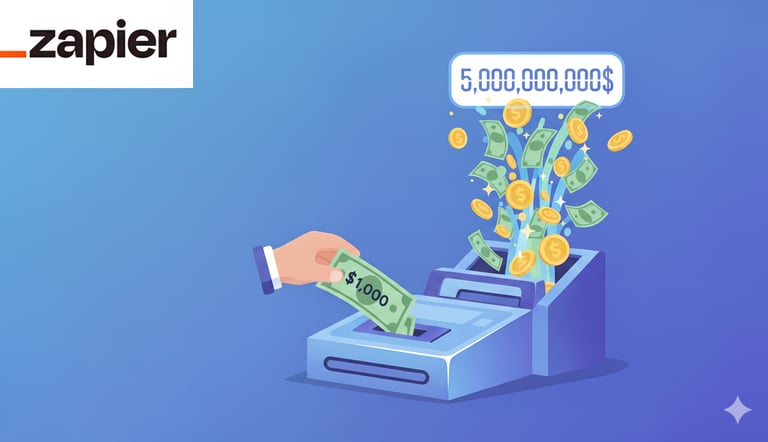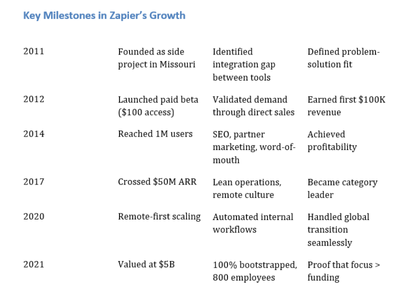How a Side Project Became a $5B B2B Powerhouse
How three founders turned a $1,000 side project into a $5B global automation brand
Benny Fluman
2 min read


Zapier: Automating Success
How a Side Project Became a $5B B2B Powerhouse
In a world where venture capital often dictates the pace of innovation, Zapier’s journey stands as a quiet revolution — a testament to how focus, simplicity, and relentless customer empathy can build a billion-dollar B2B company without a dollar of external funding.
The Origins: From Hackathon to Product-Market Fit
In 2011, three founders in Missouri built a prototype to connect Gmail and Dropbox. It didn’t win their local startup competition, but it sparked a movement.
They realized small businesses needed a simple way to automate workflows between tools. Without investors or Silicon Valley connections, they started small — emailing users manually, learning what people actually needed, and building one integration at a time.
The Strategic Breakthrough: A Paid Beta and a $100,000 Year
In 2012, Zapier launched its paid beta, charging $100 for early access. It was a bold move — and it worked. Within weeks, 600 users joined, validating the idea and funding their next steps.
By the end of the first year, Zapier made $100,000. As founder Wade Foster later said: “Charging early kept us honest. Every dollar was a vote of confidence.”
Scaling Without Funding: The Power of Lean Growth
Zapier grew with zero marketing budget. Instead, they focused on documentation, customer support, and SEO. Each blog post solved real business problems, bringing organic users.
They turned every new integration into a marketing loop — partners promoted Zapier to their audiences. By 2015, they were profitable with over 1 million users and a fully remote 30-person team.
Culture as a Competitive Advantage
Zapier’s culture was built on trust and autonomy. Every employee worked remotely, using documentation and async communication years before it became mainstream.
Instead of chasing investors, they chased efficiency. Wade Foster said: “When you’re bootstrapped, every person you hire needs to be a multiplier — not just a doer.”
Branding: Making Automation Human
Zapier never called itself a tech company. It spoke the customer’s language — simple, friendly, human. Its tagline, “Zapier makes you happier,” captured that perfectly.
Instead of spending on ads, they built Zapier University, community tutorials, and public workflow templates. The brand became synonymous with empowerment.


Lessons for Founders and B2B Managers
Zapier’s story offers lessons for every small company working globally without big budgets:
1. Start small, listen deeply. Build what users ask for.
2. Charge early — real customers validate real value.
3. Automate everything to protect your time.
4. Create value before visibility — credibility comes first.
5. Build for the long term — profit over hype.
Zapier’s Legacy in 2025
Today, Zapier powers over 6,000 app integrations and 2.5 million users. Its success is not about valuation but about values — focus, trust, and patience.
As Wade Foster said: “We didn’t grow because of capital. We grew because we solved problems people cared about.”
Final Thought
Zapier proves that in B2B, you don’t need investors to innovate — you need insight.
Small companies can scale globally through clarity, consistency, and customer love. Sometimes, the best growth strategy isn’t raising capital — it’s raising standards.

Address
4/12 Gershon Sharshevski,
Mazkeret Batya, Israel


